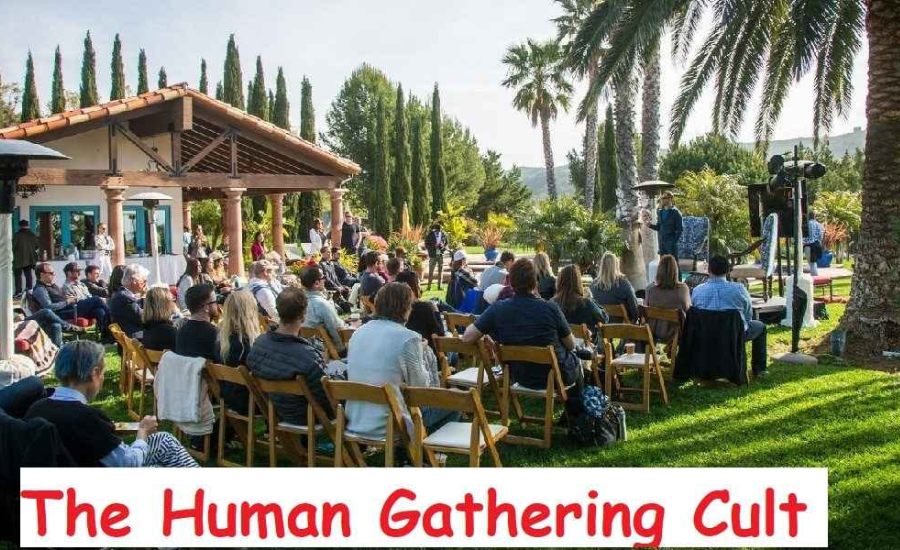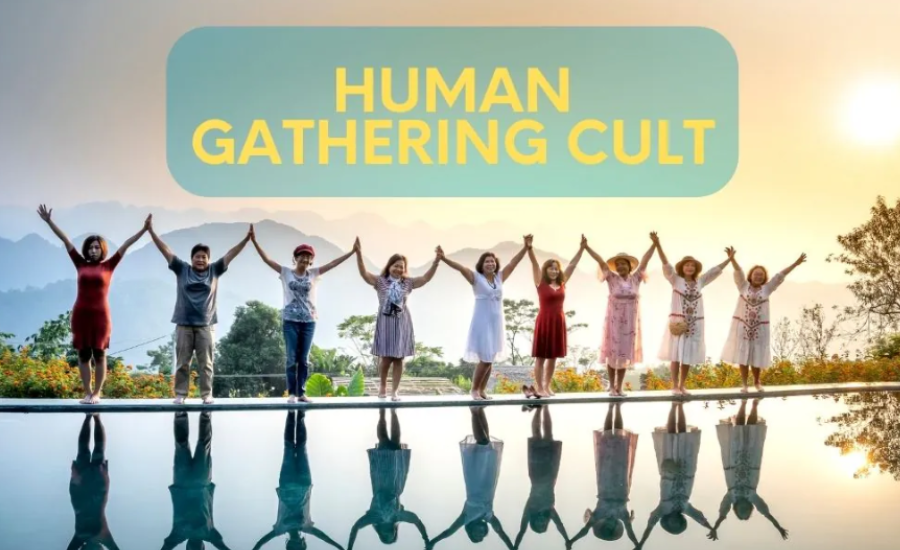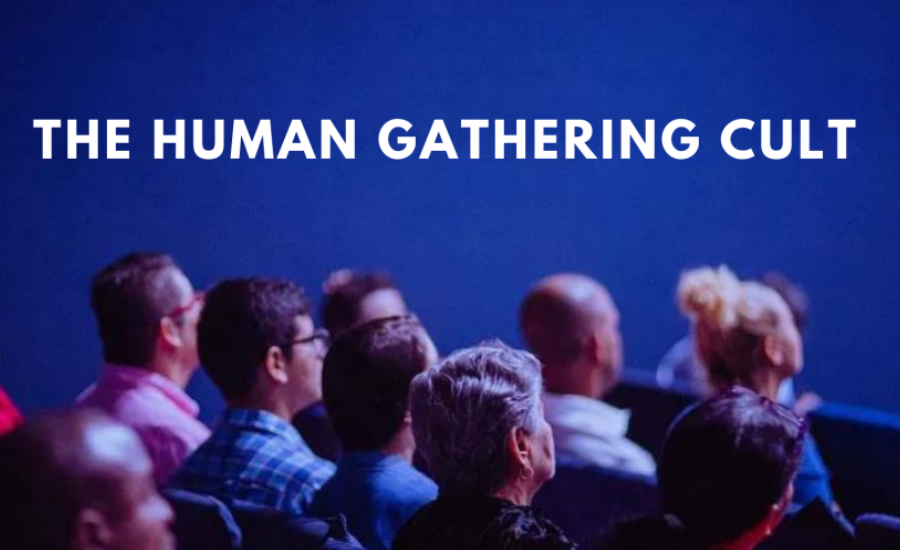Unveiling the Mysteries of Human Gathering Cult
In the realm of societal dynamics, human gathering cult stand as intriguing yet often misunderstood entities. These groups, often sensationalised by the media, delve deep into the intricacies of human nature and belief systems. Their closed-off nature sparks public curiosity, contributing to a veil of mystery that surrounds them. What lies at the heart of these cults, and how do they function psychologically and socially?
Exploring the Phenomenon of Cults
The term “cult” evokes images of secretive organisations led by charismatic figures, encompassing religious, spiritual, or even political groups with fervent adherence to specific doctrines. Human gathering cults particularly emphasise communal living and tightly-knit social bonds among members. This emphasis on communal life not only shapes their organisational structure but also plays a pivotal role in defining their modern-day manifestations. Understanding the psychological underpinnings and historical contexts of these cults unveils a complex social phenomenon rooted in deep-seated human needs for belonging and purpose.
Exploring the Historical Context of Human Gathering Cult

Since ancient times, human communities with cult-like characteristics have existed across various civilizations throughout history. These groups, such as the Essenes in Judea and various Gnostic sects within early Christianity, exemplified early forms of communal living and shared belief systems. They often sought to withdraw from mainstream society, opting instead to establish close-knit communities that upheld distinct spiritual or philosophical doctrines. These precursors to modern cults underscored a fundamental human inclination towards communalism and alternative societal structures, challenging prevailing norms of their time.
The evolution of these ancient cultic practices laid the groundwork for contemporary interpretations of communal living and ideological devotion within modern cults. While the historical contexts and specific beliefs varied widely among these early groups, their common thread was a deliberate separation from mainstream society to cultivate intimate communal bonds and preserve distinct ideological tenets. This historical backdrop not only sheds light on the enduring appeal of cultic communities but also highlights the complexities inherent in understanding their social, psychological, and historical significance across different epochs.
Psychological Motivations Behind Cult Membership
Understanding the factors driving individuals to join cults necessitates a deep dive into their psychological underpinnings. Many individuals are drawn to these groups in search of belongingness, purpose, or spiritual enlightenment. The charismatic allure of leaders within cults often proves compelling, offering followers a sense of guidance and belonging in a world that may seem chaotic or lacking in meaning. Moreover, the promise of a utopian existence, where communal living and shared ideals prevail, can be particularly enticing to those seeking a transformative lifestyle.
Characteristics and Recruitment Tactics of Human Gathering Cult

Human gathering cult exhibit distinctive traits that set them apart from conventional social structures. These groups typically operate under strong hierarchical frameworks, where leaders wield considerable influence over their followers. Isolation from mainstream society is a common feature, fostering a sense of exclusivity and reinforcing group cohesion. Cults employ various recruitment tactics, including social isolation of potential recruits, love-bombing tactics characterised by excessive affection and attention, and systematic indoctrination processes aimed at instilling and reinforcing rigid belief systems among members. Understanding these characteristics and tactics sheds light on the complex dynamics at play within human gathering cults and their impact on individuals and society.
Psychological Effects of Cult Involvement
The influence of cult participation on individuals can be deeply impactful, often involving psychological manipulation, diminished autonomy, and emotional reliance on the group dynamics. Members frequently find themselves ensnared in a web of coercive persuasion tactics that erode their ability to think critically and make independent decisions. The experience of leaving a cult can be fraught with challenges, as former members may face social ostracization, emotional turmoil, and in some cases, physical threats or coercion to remain affiliated.
Media Representation versus Reality
Cults have captivated public imagination through various forms of media, including films, literature, and documentaries. However, these portrayals often sensationalise or distort the complexities of cult existence, perpetuating stereotypes and fostering widespread misconceptions. Such depictions frequently focus on extreme cases or notorious cult leaders, overshadowing the diverse realities experienced by different cult groups and their members. As a result, the gap between media representations and the nuanced realities of cult dynamics underscores the importance of critical analysis and informed understanding when examining this complex social phenomenon.
Regulatory Challenges in Managing Cult Activities
Governments worldwide face complex challenges when addressing the activities of cults, navigating the delicate balance between safeguarding religious freedoms and protecting individuals from exploitative or harmful practices. Ethical considerations come to the forefront when cults infringe upon human rights or engage in illegal activities, prompting legislative efforts aimed at curbing potential abuses while respecting constitutional guarantees of religious liberty. The regulation of cults involves nuanced approaches that seek to uphold societal welfare without unduly restricting religious or spiritual expression.
Contemporary Cultic Phenomena
In recent years, new-age cults have emerged with increasing global visibility and a significant online presence. Groups such as NXIVM and Heaven’s Gate exemplify the diverse manifestations of modern cult dynamics, drawing followers through charismatic leadership, compelling ideologies, and promises of personal transformation. These examples underscore the enduring allure of cultic communities in contemporary society, where technological advancements and global connectivity facilitate rapid dissemination of beliefs and recruitment strategies. Understanding the evolution of cultic phenomena in the digital age is crucial for policymakers and the public alike, as they navigate the complexities of regulating and understanding these influential social groups.
Support Systems for Cult Survivors
The journey of recovering from cult experiences necessitates tailored support mechanisms. Organisations and therapists play pivotal roles in assisting former members as they navigate reintegration into mainstream society and cope with the psychological aftermath of their involvement. These support networks offer specialised resources such as counselling, community engagement, and educational workshops aimed at addressing trauma, rebuilding autonomy, and fostering resilience among survivors. By providing comprehensive care, these entities empower individuals to reclaim their lives and embark on paths towards healing and personal growth.
Insights from Academic Research
Academic inquiry into cult phenomenon contributes valuable insights into the underlying mechanisms driving cult behaviour. Studies delve into intricate aspects of group dynamics, the charismatic influence of leaders, and the psychological processes involved in indoctrination. By elucidating these complexities, research not only demystifies the inner workings of cults but also informs evidence-based approaches to prevention and intervention. Such scholarly endeavours are essential for developing strategies that safeguard vulnerable individuals and communities from the potential risks posed by cultic groups. Through rigorous investigation and scholarly discourse, academics aim to promote greater awareness, understanding, and resilience in tackling the multifaceted challenges posed by cultic involvement.
Understanding Legitimate Spiritual Communities versus Cults
Distinguishing between authentic religious or spiritual organisations and detrimental cults is essential. While many groups promote devotion and communal living as positive elements of their communities, the defining line often lies in the presence of exploitation and coercion within cultic environments. Genuine spiritual communities emphasise free will, ethical teachings, and the empowerment of individuals, fostering environments of mutual respect and spiritual growth. In contrast, cults manipulate and control their members through deceptive practices, isolation from mainstream society, and the imposition of rigid belief systems, which can lead to psychological harm and diminished personal autonomy.
The Impact of Online Platforms on Cult Dynamics
The proliferation of the internet has profoundly influenced the dynamics of cultic behaviour, particularly through online recruitment and ideological dissemination. Social media platforms and internet forums serve as virtual breeding grounds for cults to target and recruit vulnerable individuals worldwide. These digital spaces provide cultic groups with unprecedented access to potential followers, enabling them to propagate their ideologies and exert influence with minimal oversight. As a result, combating online indoctrination presents new challenges for authorities and mental health professionals alike, requiring innovative approaches to safeguarding internet users from exploitation and manipulation by cultic entities. Understanding the evolving role of online platforms in cult dynamics is crucial for developing effective strategies to protect individuals from the risks associated with online cult recruitment and influence.
Cult Education and Community Impact
Educating the public about the dynamics of cults is crucial for prevention efforts. By debunking misconceptions and encouraging critical thinking, communities can better identify early warning signs of cult behaviour and mitigate the risk of manipulation. This educational approach empowers individuals to make informed decisions and resist coercive tactics used by cultic groups, promoting resilience against undue influence and safeguarding community well-being.
The impact of cult involvement extends beyond individuals to their families and communities, creating ripple effects that challenge social norms and cohesion. Loved ones often face profound challenges in understanding and addressing cult dynamics, necessitating community-wide support mechanisms and educational initiatives. By fostering awareness and providing resources, communities can mitigate the broader social repercussions of cultic influence, offering a lifeline to those affected and strengthening resilience against the divisive effects of manipulative group dynamics.
FAQs
Q1. What are human gathering cult?
A1. Human gathering cults are social groups that emphasise communal living and often exhibit strong social bonds among members. These cults can be religious, spiritual, or even political in nature, characterised by their closed-off and sometimes secretive practices.
Q2. How do cults historically trace their roots?
A2. Cult-like communities have existed since ancient civilizations, such as the Essenes in Judea and Gnostic sects in early Christianity. These groups withdrew from mainstream society to form close-knit communities based on shared beliefs and communal living.
Q3. What motivates individuals to join cults?
A3. People often join cults seeking belongingness, purpose, or spiritual fulfilment. The allure of charismatic leaders and promises of a utopian lifestyle can also attract individuals to these groups.
Q4. What are the psychological effects of cult involvement?
A4. Cult participation can lead to psychological manipulation, diminished autonomy, and emotional dependency on the group. Exiting a cult can be challenging due to social stigma and psychological trauma.
Q5. How do cults use recruitment tactics?
A5. Cults employ various tactics like social isolation, love-bombing (excessive affection and attention), and indoctrination to recruit and retain members. These methods aim to reinforce rigid belief systems and maintain control over followers.
Conclusion
In conclusion, the study of human gathering cults reveals a complex interplay of historical legacies, psychological motivations, and societal impacts. From ancient origins to modern manifestations, cultic communities continue to intrigue and challenge our understanding of human behaviour and belief systems. As we navigate the nuances of cult dynamics—balancing individual freedoms with societal protections—it becomes clear that education, awareness, and support are crucial in safeguarding against the potential harms of manipulative group dynamics. By fostering informed dialogue and compassionate intervention, we can strive towards a more resilient and understanding approach to addressing the complexities of cultic involvement in contemporary society.
Stay In Touch For More Updates And Alerts Vents Tribune!

